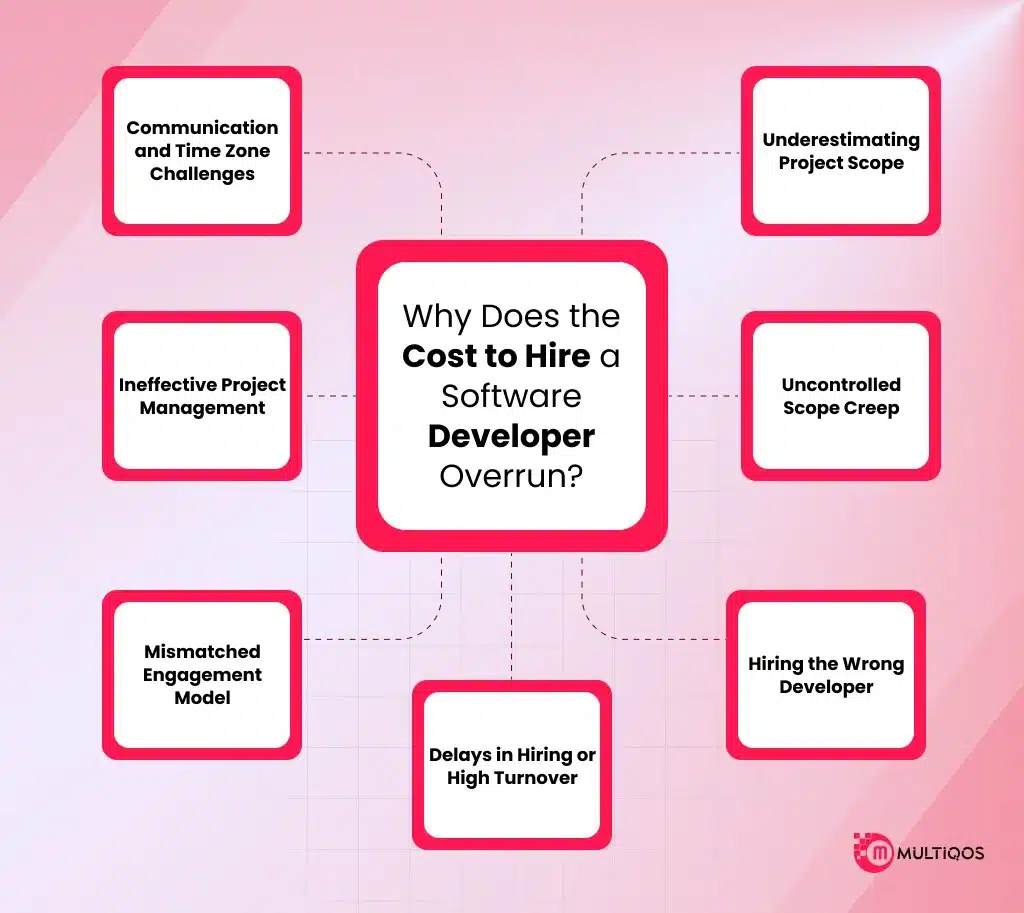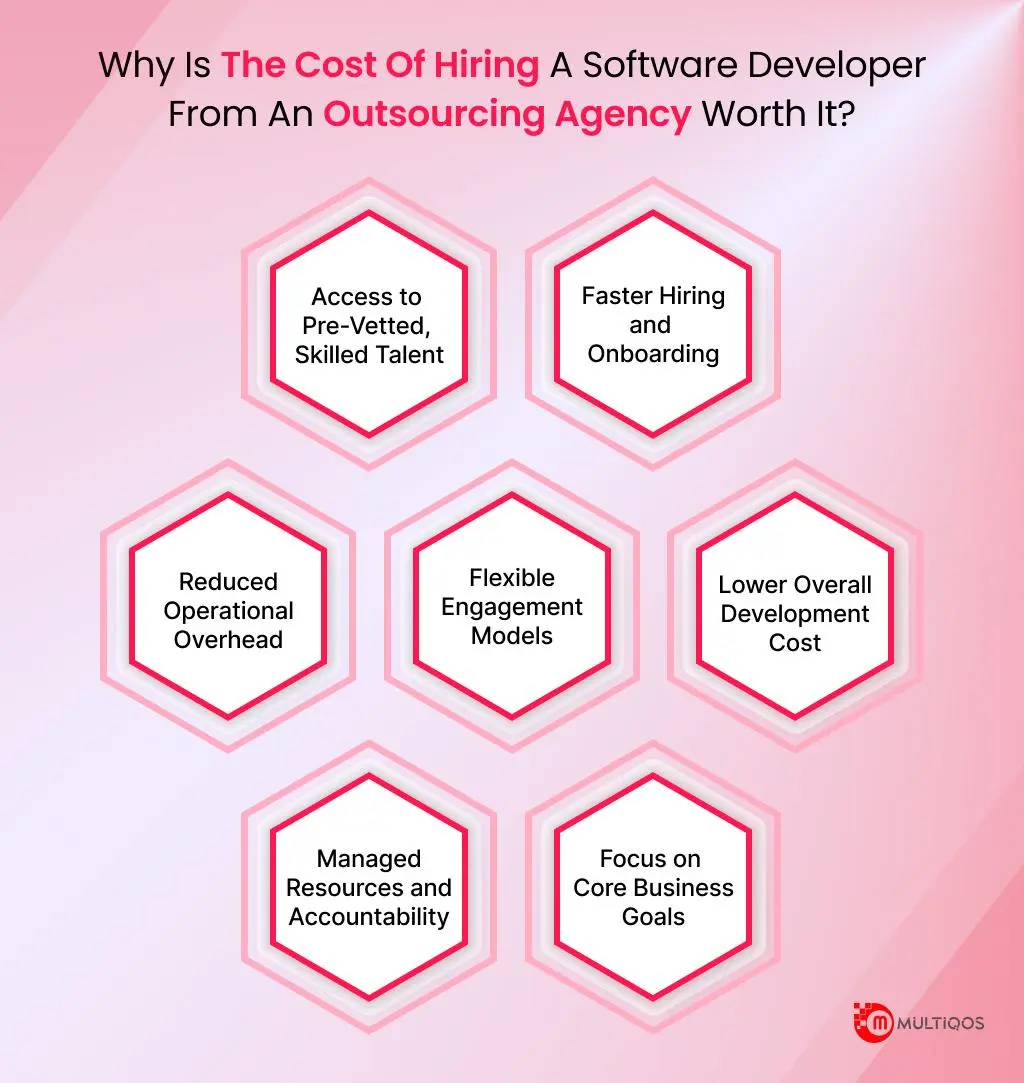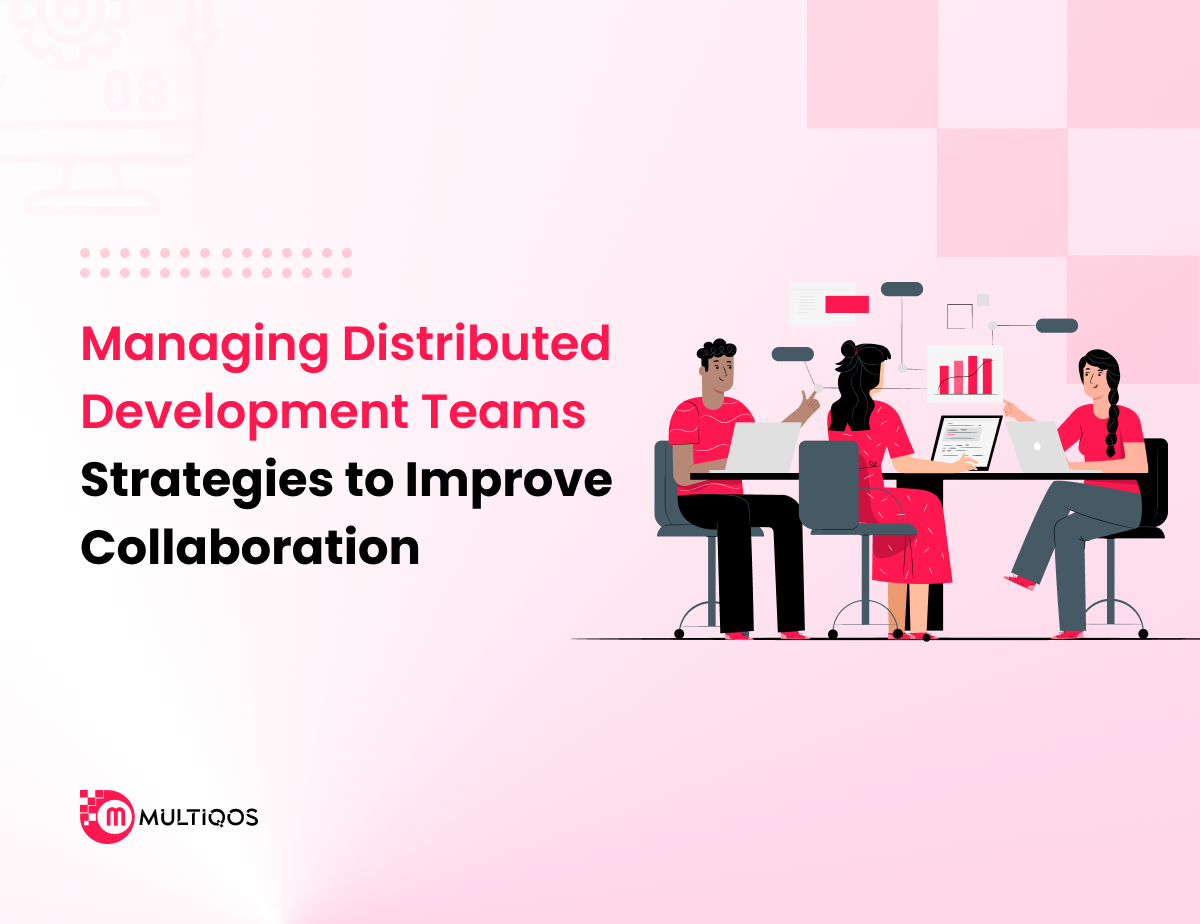Cost To Hire Software Developers in 2025: An In-Depth Analysis

Table of Content:
Summary
Understanding the cost to hire software developers is a crucial step for any business looking to build reliable and scalable software solutions in 2025. Whether you’re launching a startup, scaling an enterprise product, or outsourcing your next big project, the cost varies widely depending on location, skill level, and hiring model.
This blog will walk you through everything you need to know about software development hiring costs, including in-house vs outsourced expenses, regional pricing differences, and why outsourcing might be the smartest move in today’s competitive market. You will also gain actionable insights to make informed hiring decisions and optimize your development budget effectively.
Introduction
In today’s digital-first world, businesses are in a constant race to launch innovative software products faster and more efficiently. Whether you’re a startup founder or a tech leader in an enterprise, knowing the cost to hire software developers is key to planning your project budget and strategy. However, in this new era of software development, determining cost isn’t straightforward—it varies by location, hiring model, and project complexity.
As we move further into 2025, the demand for top-tier tech talent continues to surge, making the hiring landscape more competitive—and expensive—than ever before. This guide is your one-stop resource to break down all the components that contribute to software developer recruitment expenses, helping you hire smarter without compromising on quality.
In-House vs Outsourced: Which Hiring Model Impacts Cost More?
When assessing the cost to hire software developers, one of the biggest decisions is choosing the right engagement model: hiring an in-house team or outsourcing to an external provider. Both come with distinct cost structures, and understanding these differences can significantly influence your budget and ROI.
In-House Hiring: Greater Control, Greater Investment
Hiring developers in-house means they become a part of your core team, working full-time under your management. While this model offers long-term alignment and deeper integration into your company culture, it often comes at a premium.
Cost breakdown for in-house hiring:
- Base salary: In-house developers in the U.S. or Western Europe command high salaries. For example, a mid-level developer may earn $100,000 to $130,000 annually.
- Employee benefits: Includes health insurance, paid time off, bonuses, stock options, retirement contributions—typically adding 25–35% on top of the base salary.
- Infrastructure costs: Office space, workstations, tools, software licenses, and utilities all contribute to overall in-house development costs.
- Hiring and onboarding: Time and money spent on job postings, interviews, background checks, and training increase initial software developer recruitment expenses.
- Retention and upskilling: Keeping developers motivated may require ongoing professional development, team-building events, and competitive raises.
This model makes sense for companies with long-term, product-centric goals that need full control over the development process.
Outsourcing: Flexible, Scalable, and Budget-Friendly
Outsourcing software development—either to a third-party agency or freelancers—offers a more flexible and budget-conscious approach. It’s especially appealing to startups and growing businesses aiming to scale quickly without the overhead of in-house hiring.
Cost breakdown for outsourcing:
- Pay-as-you-go model: You typically pay per hour or per project, depending on the scope and timeline.
- No hidden employment costs: The outsourcing partner manages infrastructure, benefits, HR, and administrative costs.
- Faster hiring: Access to pre-vetted developers means you can get started in days, not weeks.
- Global talent access: You can tap into regions known for cost-effective software development, like India or Eastern Europe, significantly lowering your offshore software development cost.
- Flexible team size: Easily scale your team up or down as your project demands change without worrying about layoffs or long-term contracts.
For example, hiring a mobile app developer from an outsourcing agency in India might cost $25–$40/hour, while the same developer in the U.S. could cost over $100/hour.
Which is More Efficient Considering Cost To Hire Software Developers?
| Aspect | In-House | Outsourced |
| Average Salary/Rate | High | Moderate to Low |
| Hiring Speed | Slower | Faster |
| Infrastructure & Benefits | Required | Not Required |
| Scalability | Limited | Highly Scalable |
| Best Fit For | Long-term projects with high control needs | Short- to mid-term projects with cost constraints |
Cost to Hire a Software Developer: A Geographical Breakdown
The cost to hire software developers varies significantly depending on the region. Factors such as local salary benchmarks, availability of skilled talent, time zone compatibility, and economic conditions all influence the final price tag. Here’s how different regions compare in terms of hiring costs.
North America
- Average Rate: $100 – $150/hour
- Annual Salary Range: $90,000 – $140,000+
North America, especially the U.S. and Canada, is home to some of the highest-paid developers globally. While you benefit from a shared culture and minimal communication barriers, you’re also paying premium prices. This region is best suited for companies with generous budgets and long-term development goals.
Latin America
- Average Rate: $40 – $70/hour
- Annual Salary Range: $30,000 – $60,000
Latin America has emerged as a strong contender for nearshore outsourcing, particularly for North American businesses. The cost advantage, overlapping time zones, and growing technical talent make it a compelling option for companies that want a balance between cost and collaboration.
Central & Eastern Europe
- Average Rate: $35 – $60/hour
- Annual Salary Range: $25,000 – $50,000
Countries like Poland, Ukraine, and Romania are known for high-quality developers and strong technical education. This region offers a middle ground—more affordable than North America, but with higher quality than many lower-cost regions. It’s ideal for companies seeking a balance between performance and price.
Asia
- Average Rate: $20 – $45/hour
- Annual Salary Range: $8,000 – $25,000
Asia, particularly India, Vietnam, and the Philippines, leads in cost-effective software development. India, in particular, offers a vast pool of highly skilled developers at competitive prices. Whether you’re hiring a back-end developer, a mobile app specialist, or a full-stack engineer, Asia provides the most economical option.
- Junior developer salary in India: $5,000 – $12,000/year
- Senior developer salary in India: $15,000 – $30,000/year
- Freelance developer rates India: $15 – $30/hour
- Full-time developer cost in India: $1,200 – $2,500/month
- Part-time developer rates India: $8 – $20/hour
Africa
- Average Rate: $20 – $40/hour
- Annual Salary Range: $10,000 – $20,000
Africa is a rising hub for affordable development talent. Countries like Nigeria, Kenya, and South Africa are seeing growth in their tech sectors. While some regions still face infrastructure and experience challenges, Africa is quickly becoming a viable outsourcing destination.
Global Cost Perspective
When comparing software developer rates by region, it’s clear that cost savings are achievable without compromising on talent. The right choice depends on your specific project needs, budget, and tolerance for time zone differences or communication gaps.
Taking location into account is a key step in accurate software development cost estimation, helping you balance quality with affordability across borders.
Why Does the Cost to Hire a Software Developer Overrun?
Despite careful planning, the cost to hire software developers can often exceed expectations. These overruns are usually caused by hidden expenses, overlooked factors, or inefficient processes. Here’s a breakdown of the most common reasons why software development costs spiral beyond the original budget.
1. Underestimating Project Scope
Many companies fail to accurately assess the full scope of their project at the outset. What starts as a simple application can quickly evolve into complexity. As requirements grow, so do development hours, resource needs, and overall costs—especially when proper software development cost estimation hasn’t been done.
2. Uncontrolled Scope Creep
Frequent and unmanaged changes to the project scope are a leading cause of cost overruns. Each new feature, integration, or adjustment adds time and complexity, ultimately inflating both the timeline and the budget. These issues become especially costly if not accounted for in the initial agreement.
3. Hiring the Wrong Developer
A poor hiring decision can significantly impact cost and quality. Developers who lack the right technical skills or experience often produce subpar code. This results in delays, technical debt, and rework—driving up the total software developer recruitment expenses and harming project momentum.
4. Delays in Hiring or High Turnover
Prolonged hiring cycles or unexpected turnover can halt progress. The time and resources spent replacing developers, onboarding new team members, and catching up on lost work all contribute to budget inflation. These disruptions are common in highly competitive hiring markets.
5. Mismatched Engagement Model
Using the wrong hiring model for your project can lead to unnecessary costs. Hiring full-time in-house developers for a short-term job or choosing expensive consultants when a freelancer would suffice are common mistakes. These mismatches inflate the software development pricing models without adding proportional value.
6. Ineffective Project Management
A lack of structured project management can cause major inefficiencies. Without clear timelines, roles, and communication protocols, teams often miss deadlines and duplicate efforts. These inefficiencies lead to longer timelines and increased billing—especially when working with external partners.
7. Communication and Time Zone Challenges
In global outsourcing scenarios, miscommunication and time zone misalignment can slow things down. Delays in feedback, missed stand-ups, and lack of real-time collaboration may stretch delivery timelines and increase hourly billing. This is a common challenge in managing offshore software development costs.
A realistic approach to planning, clear project boundaries, and choosing the right developers from the start are essential to avoid these common pitfalls. Understanding what leads to overruns will help you keep your cost to hire software programmers firmly under control.
Why Is the Cost of Hiring a Software Developer from an Outsourcing Agency Worth It?
At first glance, outsourcing may seem like just a way to reduce the cost of hiring software engineers, but its advantages go far beyond affordability. Partnering with a reliable outsourcing agency to hire software developers provides access to high-quality talent, operational flexibility, and faster time-to-market—all while optimizing your budget. Here’s why it’s often worth every dollar.
1. Access to Pre-Vetted, Skilled Talent
Outsourcing agencies maintain a pool of experienced, well-vetted developers across multiple technologies. This means you don’t need to spend weeks screening resumes or conducting multiple interviews. Agencies already have developers who are technically tested, making it easier to match the right skills with your project.
2. Faster Hiring and Onboarding
Agencies significantly reduce time-to-hire by offering immediate access to ready-to-work professionals. While in-house recruitment can take 4–6 weeks or more, outsourcing partners can usually deploy developers within days. This accelerated onboarding helps you launch development faster and shortens your overall timeline.
3. Reduced Operational Overhead
When you hire through an agency, you eliminate many of the expenses tied to full-time employment—no health benefits, retirement plans, or office space requirements. You only pay for the work delivered, making it a leaner model compared to traditional in-house development costs.
4. Flexible Engagement Models
Outsourcing allows you to choose a model that suits your budget and project needs—hourly, part-time, or full-time. You can scale your team up or down as needed without long-term commitments. This flexibility is ideal for startups and growing businesses with evolving requirements.
5. Lower Overall Development Cost
Partnering with agencies in cost-efficient regions like Asia or Eastern Europe reduces total software development outsourcing pricing significantly. These regions offer high-quality work at a fraction of the cost you’d pay in North America or Western Europe—without compromising on output.
6. Managed Resources and Accountability
Most agencies provide project managers or team leads to oversee the work and ensure timely delivery. This built-in management layer means less oversight is required on your end, reducing risks and improving productivity. You gain peace of mind knowing deadlines and standards are being met.
7. Focus on Core Business Goals
With technical execution handled externally, your internal team can focus on product strategy, marketing, and scaling. This Software Integration for Business approach boosts efficiency and lets leadership prioritize critical objectives.
Conclusion
The cost to hire software developers involves more than just salaries. It includes recruitment, onboarding, tools, and infrastructure. Costs also vary based on region, engagement model, and experience level. Whether hiring in-house or outsourcing, understanding these variables helps manage budgets, reduce risks, and ensure you hire the right talent for efficient and scalable software development.
Frequently Asked Questions
The cost depends on region, experience, and hiring model. Rates range from $20/hour in outsourcing hubs to $150/hour in North America. At MultiQoS, we help you estimate accurate software development cost estimation based on your project scope.
The software developer hourly rate varies globally. Developers in Asia or Eastern Europe may charge $20–$50/hour, while U.S.-based developers may cost over $100/hour. MultiQoS offers transparent pricing tailored to your budget.
Yes, a freelance developer’s cost is often lower, but quality can vary. MultiQoS provides an alternative with vetted developers who offer the flexibility of freelancers and the reliability of full-time talent.
Include salary or hourly rate, recruitment, tools, training, and overhead. Our team at MultiQoS uses a proven software developer pricing guide to help you calculate and optimize your hiring cost.
Rates differ due to tech stack, experience, location, and engagement type. At MultiQoS, we guide clients through software developer salary comparisons and model selection to ensure cost efficiency.
Outsourcing software development remains the most budget-friendly option. MultiQoS specializes in cost-effective software development in India, combining affordability with top-tier engineering talent.
In-house is ideal for long-term, core product work. Outsourcing suits flexible or budget-driven needs. MultiQoS offers scalable software development outsourcing India solutions to match both.
Popular options include Upwork, Toptal, and Freelancer. But if you’re seeking pre-vetted experts and reliable delivery, MultiQoS is one of the best platforms to hire software developers for quality and value.
Get In Touch






